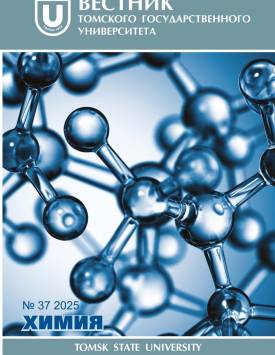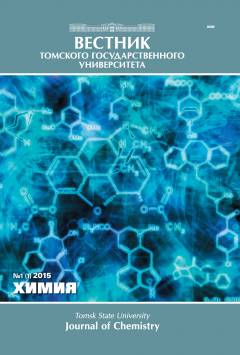Synthesis and characterization of nanothermite systems with biocidal additives
The efficiency of Lactobacillus casei inactivation using nanothermites based on nAl+CuO/Fe₂O₃/MoO₃ in combination with biocidal additives such as crystalline iodine (I₂), iodoform (CHI₃) and zinc oxide (ZnO) was investigated. It was shown that the reaction products (>98%) settled within 660 s on the walls and bottom of the chamber, leaving only 1-2% of 3-4 µm aerosol particles in suspension. Among the oxidizing agents, CuO showed the most stable combustion, producing a dense aerosol cloud and achieving a bactericidal activity index of 33% at a distance of 125 mm from the explosion epicenter, compared to ~9% for Fe₂O₃ and ~3% for MoO₃. When 20 wt% I₂ was introduced, the formation of reaction products resulted in high inactivation efficiency, with a bactericidal activity index of 72% at a distance of 125 mm from the blast epicenter. However, increasing the I₂ content to 40 wt% decreased the bactericidal activity index to 50%. Similarly, 20 wt% CHI₃ enhanced inactivation through the formation of protein-complex iodine species, reaching a maximum value of 73% at 125 mm from the blast epicenter; higher concentration of CHI₃ reduced the efficiency by lowering the reaction temperature and creating biocidal reaction products. Changing the concentration of ZnO had no appreciable effect on inactivation, indicating a threshold effect in the generation of zinc biocidal compounds. For all additives, the inactivation efficiency decreased at long distances (e.g., from 125 mm to 445 mm) due to rapid dispersion of the reaction product cloud. The experimental results emphasize the importance of the balance between biocidal additive concentration and combustion efficiency. Optimal formulations incorporating 20 wt.% I₂, CHI₃ or ZnO into nAl+CuO nanothermites maintain reliable energy performance and generate biocidal reaction products that can significantly reduce the viability of Lactobacillus casei. Contribution of the authors: the authors contributed equally to this article. The authors declare no conflicts of interests.
Keywords
nanothermites,
metal oxides,
bactericidal activity,
combustion,
atmospheric purification,
biocidesAuthors
| Sokolov Sergei D. | Tomsk State University | sokolovsd95@yandex.ru |
| Kudryashova Olga B. | Institute for Problems of Chemical and Energetic Technologies of the Siberian Branch of the Russian Academy of Sciences | olgakudr@inbox.ru |
| Nefedov Roman A. | Tomsk State University; Institute for Problems of Chemical and Energetic Technologies of the Siberian Branch of the Russian Academy of Sciences | ronef88@yandex.ru |
| Vorozhtsov Alexander B. | Tomsk State University | abv1953@mail.ru |
Всего: 4
References
Baboli Z., Neisi N., Babaei A.A. et al. On the airborne transmission of SARS-CoV-2 and relationship with indoor conditions at a hospital // Atmospheric Environment. 2021. Vol. 261. Art. 118563.
Сакович Г.В., Комаров В.Ф., Ворожцов А.В. и др. Нейтрализация токсических веществ при террористических актах и техногенных катастрофах // Известия вузов. Физика. 2005. № 48 (S11). С. 109-115.
Zhao W., Wang X., Wang H. et al. Titanium enhanced ignition and combustion of Al/I2O5 mesoparticle composites // Combustion Flame. 2020. Vol. 212. P. 245-251.
Kotter L.N., Groven L.J. Boron carbide-based biocide compositions: A study of iodate particle size on combustion and iodine output // Propellants, Explosives, Pyrotechnics. 2020. Vol. 45. P. 509-516.
Wu T., Hagen E., Wang H. et al. Achieving superior ignition and combustion performance of Al/I2O5 biocidal nanoenergetic materials by CuO addition // Combustion Flame. 2024. Vol. 259. Art. 113190.
Kudryashova O., Sokolov S., Vorozhtsov A. Mathematical model of propagation of an aerosol created by an impulse method in space // Materials. 2023. Vol. 16. Art. 5701.
Al Hallak M., Verdier T., Bertron A. et al.Comparison of photocatalytic biocidal activity of TiO2, ZnO and Au/ZnO on Escherichia coli and on Aspergillus niger under light intensity close to real-life conditions // Catalysts. 2023. Vol. 13. Art. 1139.
Chang J., Zhao G., Zhao X. et al. New promises from an old friend: iodine-rich compounds as prospective energetic biocidal agents // Accounts of Chemical Research Journal. 2021. Vol. 54 (2). P. 332-343.
Dreizin E.L. Metal-based reactive nanomaterials // Progress in Energy and Combustion Science. 2009. Vol. 35. Art. 141-167.
Khasainov B., Comet M., Veyssiere B., Spitzer D.Comparison of performance of fast-reacting nano-thermites and primary explosives // Propellants, Explosives, Pyrotechnics. 2017. Vol. 42. P. 754-772.
Wu T., Zachariah M.R. Silver ferrite: a superior oxidizer for thermite-driven biocidal nanoenergetic materials // RSC Advances. 2019. Vol. 9 (4). P. 1831-1840.
Sullivan K.T., Wu C., Piekiel N.W. et al. Synthesis and reactivity of nano-Ag2O as an oxidizer for energetic systems yielding antimicrobial products // Combustion Flame. 2013. Vol. 160. P. 438-446.
Zhou W., DeLisio J.B., Li X. et al. Persulfate salt as an oxidizer for biocidal energetic nanothermites // Journal of Materials Chemistry A. 2015. Vol. 3. P. 11838-11846.
Wang H., Jian G., Zhou W. et al. Metal iodate-based energetic composites and their combustion and biocidal performance // ACS Applied Materials & Interfaces Journal. 2015. Vol. 7. P. 17363-17370.
Feng J., Jian G., Liu Q., Zachariah M.R. Passivated iodine pentoxide oxidizer for potential biocidal nanoenergetic applications // ACS Applied Materials & Interfaces Journal. 2013. Vol. 5. P. 8875-8880.
Wu T., Wang X., Zavalij P.Y. et al. Performance of iodine oxides/iodic acids as oxidizers in thermite systems // Combustion Flame. 2018. Vol. 191. P. 335-342.
Mulamba O., Hunt E.M., Pantoya M.L. Neutralizing bacterial spores using halogenated energetic reactions // Biotechnology and Bioprocess Engineering. 2013. Vol. 18. P. 918-925.
Zhou W., Orr M.W., Lee V.T., Zachariah M.R. Synergistic effects of ultrafast heating and gaseous chlorine on the neutralization of bacterial spores // Chemical Engineering Science. 2016. Vol. 144. P. 39-47.
Tabit F.T., Buys E. The effects of wet heat treatment on the structural and chemical components of Bacillus sporothermodurans spores // International Journal of Food Microbiology. 2010. Vol. 140. P. 207-213.
Sullivan K.T., Piekiel N.W., Chowdhury S. et al. Ignition and combustion characteristics of nanoscale Al/AgIO3: A potential energetic biocidal system // Combustion Science and Technology. 2010. Vol. 183. P. 285-302.
Lerner M.I., Glazkova E.A., Lozhkomoev A.S. et al. Synthesis of Al nanoparticles and Al/AlN composite nanoparticles by electrical explosion of aluminum wires in argon and nitrogen // Powder Technology. 2016. Vol. 295. P. 307-314.
Ишматов А.Н., Ахмадеев И.Р., Ворожцов Б.И. и др. Лазерная измерительная установка для исследования высококонцентрированных жидкокапельных аэрозолей // Датчики и системы. 2011. № 11. С. 61-63.
Gant V.A., Wren M.W., Rollins M.S. et al. Three novel highly charged copper-based biocides: safety and efficacy against healthcare-associated organisms // Journal of Antimicrobial Chemotherapy. 2007. Vol. 60 (2). C. 294-299.
Angelé-Martínez C., Nguyen K.V.T., Ameer F.S. et al. Reactive oxygen species generation by copper (II) oxide nanoparticles determined by DNA damage assays and EPR spectroscopy // Nanotoxicology. 2017. Vol. 11 (2). P. 278-288.
Naatz H., Lin S., Li R. et al. Safe-by-design CuO nanoparticles via Fe-doping, Cu-O bond length variation, and biological assessment in cells and zebrafish embryos // ACS nano. 2017. Vol. 11 (1). P. 501-515.
Durani P., Leaper D. Povidone-iodine: use in hand disinfection, skin preparation and antiseptic irrigation // International Wound Journal. 2008. Vol. 5 (3). P. 376-387.

